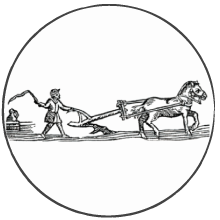The 18th century is a period of perennial interest in Danish historiography, and for good reason: it was in this decade that the so-called Great Agrarian Reforms (Danish: Landboreformerne) within the span of less than a lifetime almost completely uprooted the feudal structure of Danish society and replaced it with widespread rural owner-occupancy.
While the manors were not abolished per se, and the old aristocratic families would in some cases be able to transform themselves into members of a political ruling class in the 19th century, Denmark profoundly changed as a result of the Agrarian Reforms. It was (arguably) not a reform, but a revolution in the social system of the Kingdom.
The causality of the reform effort is at the macro level in my opinion as follows: The Kingdom of Denmark found itself in an escalating crisis of surplus extraction in the 18th century. In short, a demographic increase combined with
i) escalating ecological degradation
ii) a widespread commitment to the middle-sized family hold, and
iii) limited useable land led to an increase in cottagers with little to no land in Danish village society.
This led to mounting peasant debts to the lordly class. And as the aristocracy was responsible for the collection and payment of state taxes, the build-up of arrears spread to the Absolute state, ultimately to the point where the payment of interest on foreign debt was the primary state expense.
However, there is a mystery that remains unanswered: While it is possible to explain the need for something to happen in Danish society in the 18th century to address the crisis of surplus extraction, there is no obvious explanation as to why exactly the tactic that was ultimately pursued was the large-scale rapid alienation of land from the aristocracy to the peasantry.
As shown in this paper, the reproduction of the aristocracy in 17th and 18th century Denmark rested directly on the holding and accumulation of land. Therefore, as land was sold off en masse, the loss of power and importance of the traditional aristocracy led to the manorial structure being dethroned from its hegemonic position in Danish society. It was, essentially, a class suicide. As such, my research question is the following: how and why did the Danish aristocracy end up selling off their land in the latter part of the 18th century? Or, alternatively, how could this course of action seem rational to pursue?

